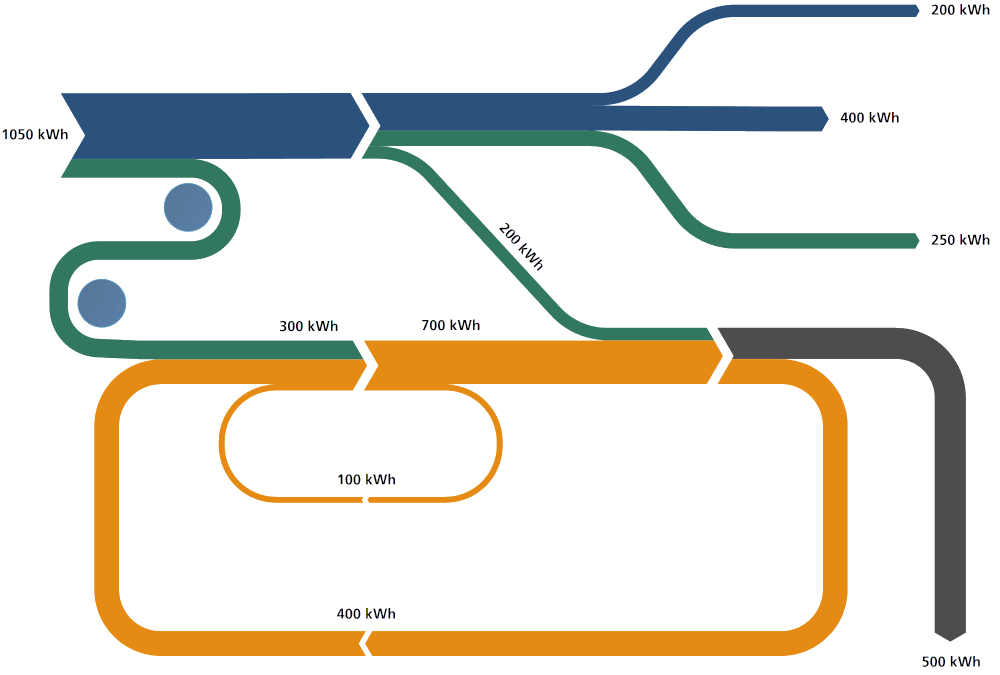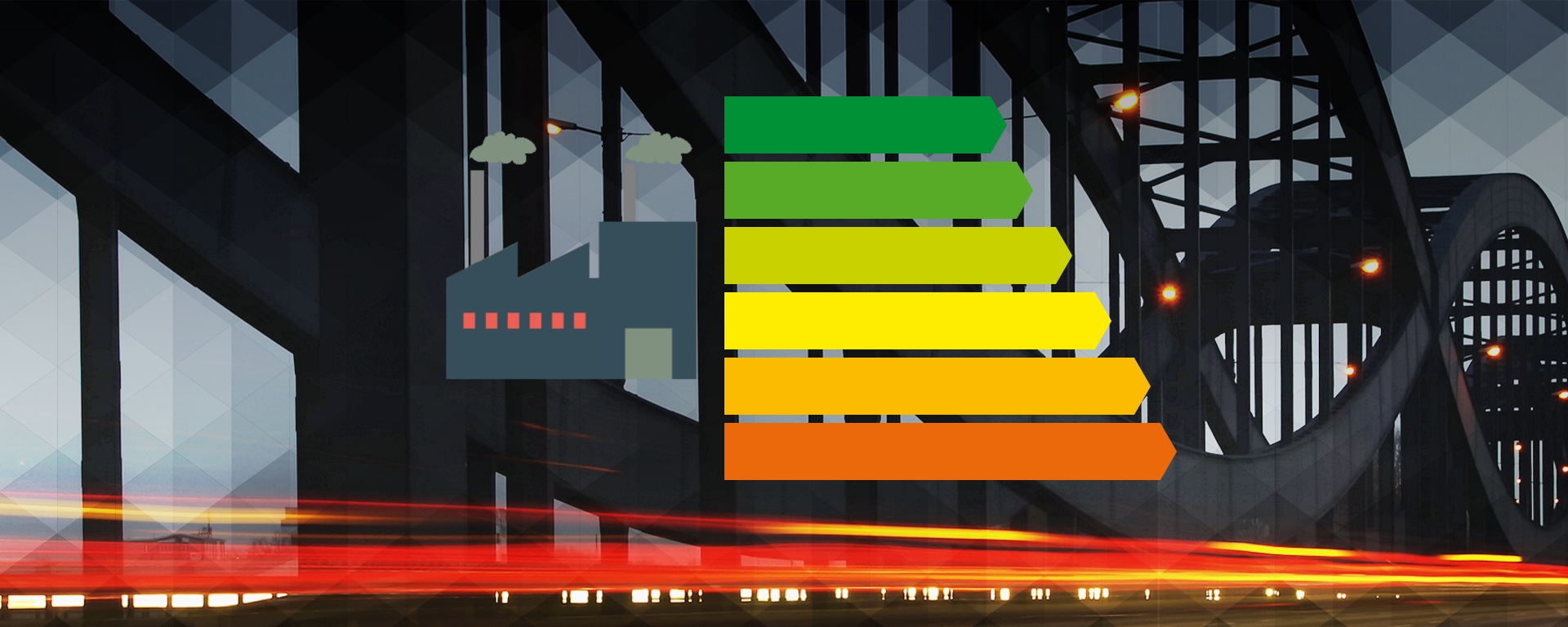What is a Sankey Diagram?
Sankey Diagram – Definition:
Sankey diagrams feature directed arrows that have a width proportional to the flow quantity visualized: if a flow is twice as wide it represents double the quantity. Flow diagrams can show e.g. energy, materials, water or costs.
Within a Sankey chart the directed flow is always drawn between at least two nodes (processes). Thus it shows not only values but also information about the structure and distribution of the defined system. So they are a great alternative to common flow or bar & pie charts.
Areas of Application
They are gaining popularity in energy management, facility management, process engineering and process control and many other kinds of data visualization (Energy, material & supply chain management or business & marketing analysis).
Benefits of Sankey Diagrams
In comparison to a conventional bar or pie chart and even a flow chart, they are more suitable for visualizing the energy balance or material streams.
Sankey charts draw the attention to the largest and most significant entries within a system. Additionally, through the visualization data inconsistencies can be detected, such as measurement and transmission errors.

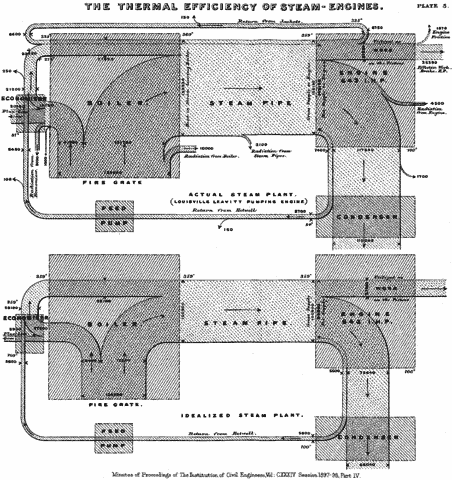
A Brief History of Sankey Diagrams
The first illustration of energy with arrows proportional to the amount were done by the Irish engineer Captain Matthew Henry Phineas Riall Sankey in 1898. He compared the efficiency of steam engines.
Before that this kind of diagram had been used by the French engineer Charles Joseph Minard to visualize Napoleon's Russian Campaign of 1812.
Captain Sankey only drew that one chart. Thus they fell into oblivion over the years. In the 20th century the Austrian mechanical engineer Alois Riedler (1850-1936) started to use these charts to analyze the power and the energy losses of passenger cars.
In the course of this the Sankey diagram gained popularity, especially in Germany, where the economy focused on material and energy efficiency due to the reparation payments after World War I.
Today this kind of chart is used worldwide for data visualization, e.g. in material flow analyzes and energy management systems.
Example Charts
Below you find some examples of several Sankey diagrams. Each diagram was created using our software e!Sankey. Just try out by yourself, how easy it is, to create appealing Sankey diagrams using e!Sankey.
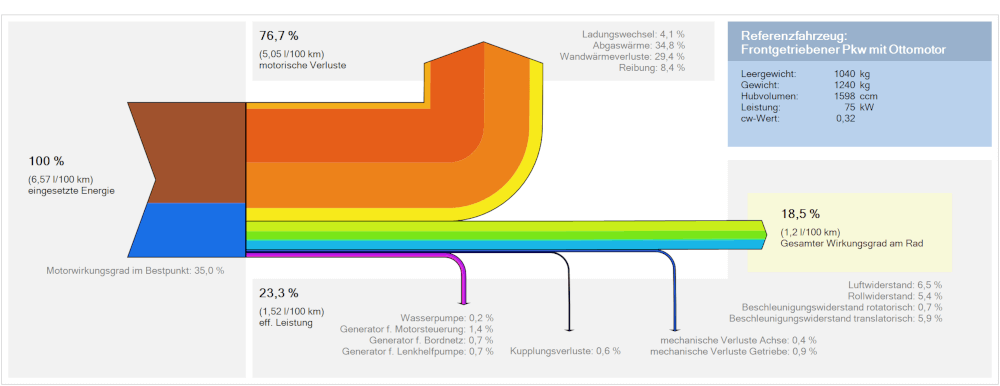
Energy Use in a Passenger Car
In this diagram (in German) you can see the energy balance for a passenger car. Besides the energy actually used for motion at the wheel ("mechanische Energie") a large part of is lost, especially as heat losses. Additionally we can identify the additional consumers (water pump, steering support, etc.) in the car.
The figures are given as percentage values, as well as in absolute numbers (based on a fuel consumption of 6,57 Liter/100 km). All arrows within the chart can be distinguished by color, and are – by definition – proportional in their width to the flow quantities they represent.
(Source: Prof. Mario Schmidt, INEC, Pforzheim University)

Example 2: Food Supply Chain
In this rather simple chart we can see losses along a process chain for food. In every step the losses are shown as an arrow branching out to the bottom, labeled with percentages (mass-%).
So here we have no absolute quantitites (although the diagram is based on real data), but only proportions. One could call this the "efficiency" of food production, processing and consumption.
Source: David Lisle, 'Know The Flow' blog, based on data from a study by FAO.
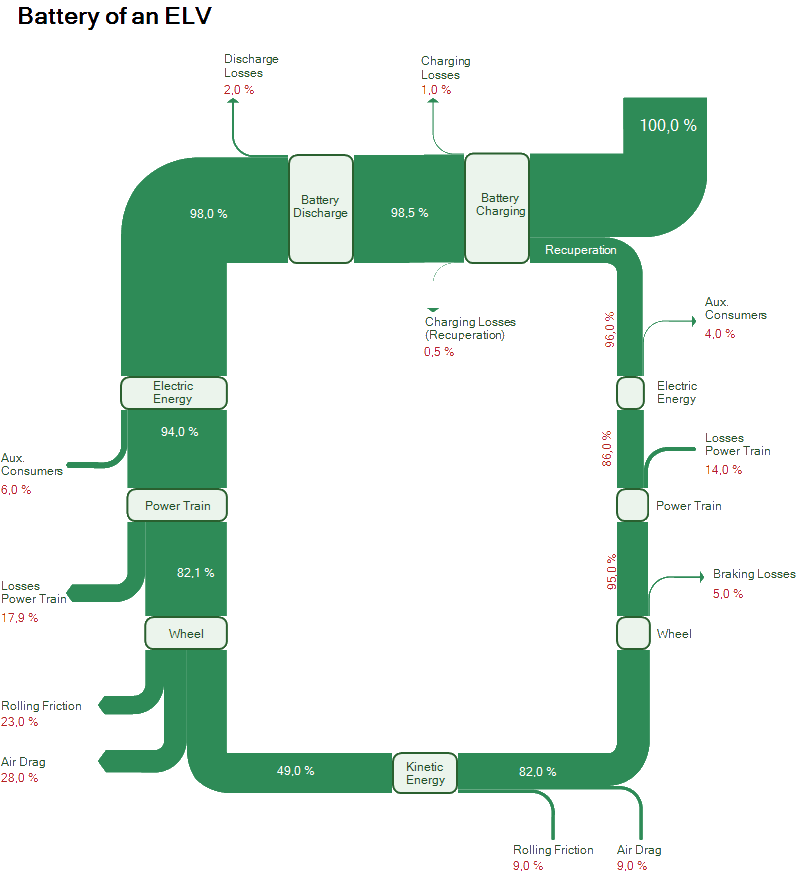
Example 3: Battery of an ELV
Very often we find diagrams which have a left-to-right orientation (just as the reading direction for many, but not all scripts). However, in e!Sankey you do not have any limitations as to the directions. This is helpful when depicting material flows in a production system, or, as is the case in this diagram, when visualizing loops.
This Sankey diagram displays a battery cycle for an electric vehicle (ELV) with losses branching out at every node of the cycle.
Source: sankey-diagrams.com
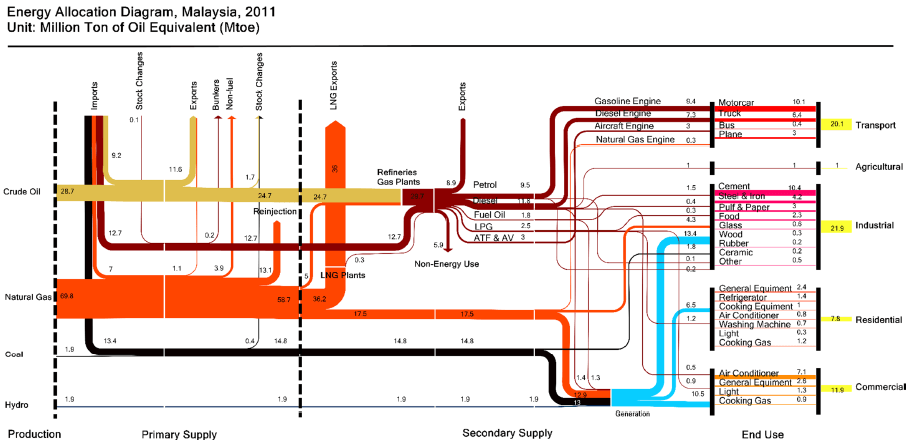
Example 4: Energy balance of a country
Energy flow charts are used very often for energy balances in a region or in a country. Thus the different use of energy and energy sources can be seen.
This example is from Malaysia in 2011. The unit of the flows is 'Million tonnes of oil equivalent' ('Mtoe').
Source: Chong, C.; Ni, W.; Ma, L.; Liu, P.; Li, Z. The Use of Energy in Malaysia: Tracing Energy Flows from Primary Source to End Use. Energies 2015, 8, 2828-2866.


